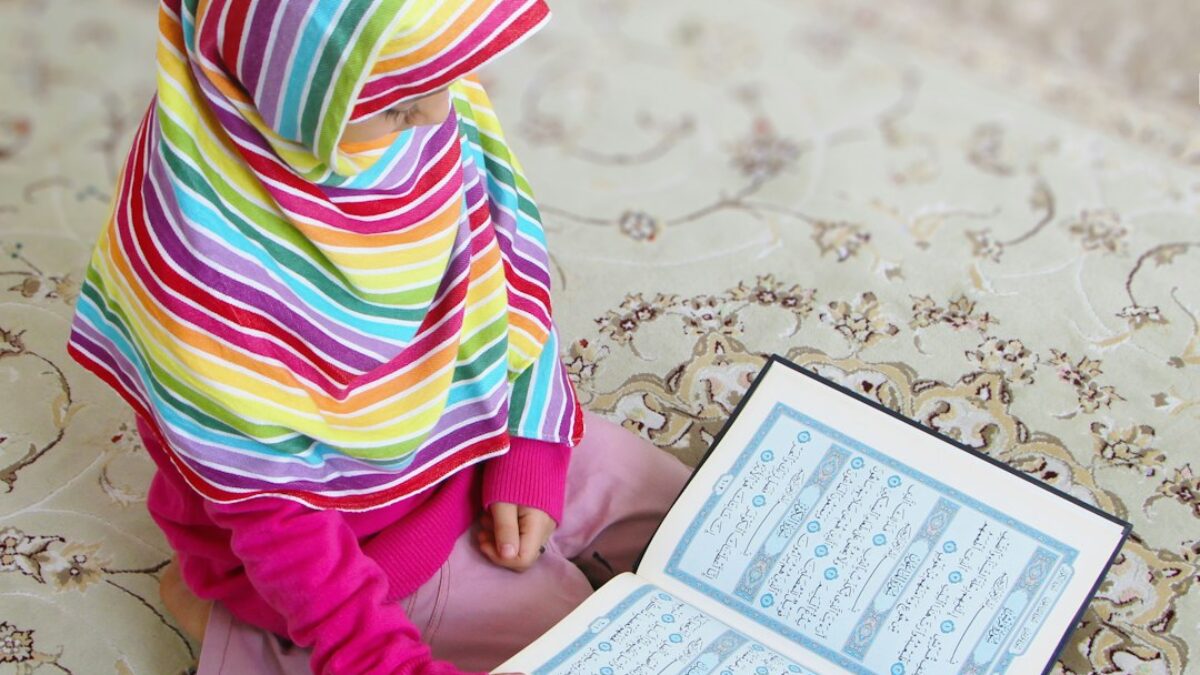In today’s diverse American landscape, Muslim parents and educators face the rewarding challenge of instilling Islamic values in children growing up in a pluralistic society. Islamic storytelling offers a powerful, time-tested method for transmitting faith, morals, and cultural heritage in a way that resonates with young minds. This article explores the rich tradition of Islamic stories adapted for children in the USA, examining their significance, key components, benefits, practical applications, and addressing common questions. We delve into how these narratives serve as engaging bridges connecting young Muslims to their faith while navigating contemporary American life, fostering character development, spiritual growth, and a strong Islamic identity.
Understanding Islamic Storytelling for Children in the USA
The tradition of storytelling in Islam is deeply rooted, drawing from the Quran, the life of Prophet Muhammad (peace be upon him), the lives of other prophets, the tales of pious predecessors (Salaf al-Salihin), and rich folk narratives passed down through generations. For children in the United States, these stories are not merely entertainment but vital tools for learning about Allah, the prophets, Islamic ethics, and the beauty of their faith in an accessible and relatable manner.
The American Context: Opportunities and Challenges
Raising children with a strong Islamic identity in the USA presents unique opportunities and challenges. On one hand, access to diverse resources, educational institutions, and a vibrant Muslim community offers support. On the other, children encounter influences from mainstream American culture, media, and peer groups that may sometimes conflict with Islamic values. Well-crafted Islamic stories provide:
- Relatable Context: Stories featuring children in familiar American settings (schools, parks, homes) facing everyday dilemmas.
- Cultural Integration: Narratives that demonstrate how Islamic values coexist and enrich the American experience.
- Reinforcement: Positive reinforcement of Islamic teachings through engaging plots and characters.
- Identity Formation: Building a sense of belonging to both the American Muslim community and the global Ummah.
Core Objectives of Islamic Storytelling
The primary goals of using Islamic stories with children in the USA extend beyond mere knowledge acquisition:
- Faith Foundation (Iman): Instilling belief in Allah, His angels, His books, His messengers, the Day of Judgment, and divine decree.
- Moral Development (Akhlaq): Cultivating virtues like honesty, kindness, patience, gratitude, and respect.
- Prophetic Love and Understanding: Developing deep love, respect, and understanding of Prophet Muhammad (PBUH) and other prophets.
- Islamic Identity: Fostering a positive sense of self as a Muslim American.
- Practical Application: Demonstrating how Islamic teachings apply to real-life situations children face.
Key Components of Effective Islamic Stories for Kids
Not all stories labeled “Islamic” are equally effective for children. The most impactful ones share several key components that make them engaging, educational, and spiritually nurturing.
Authenticity and Age-Appropriate Content
Stories must be grounded in authentic Islamic sources (Quran, Sunnah, Seerah) but presented in a way suitable for a child’s cognitive and emotional level. This involves:
- Simplified Language: Using vocabulary and sentence structures understandable to the target age group.
- Accurate Representation: Ensuring theological concepts and historical events are portrayed correctly.
- Sensitive Topic Handling: Addressing challenging themes (like hardship, death, or injustice) with care and appropriate depth for the age.
Engaging Narrative Elements
To capture and maintain a child’s attention, stories need compelling storytelling techniques:
- Relatable Characters: Children protagonists facing dilemmas kids understand (bullying, sharing, telling the truth, handling anger).
- Clear Conflict and Resolution: Presenting a problem clearly and showing how Islamic principles guide towards a positive resolution.
- Emotional Connection: Evoking empathy, excitement, or laughter to make the story memorable.
- Interactive Elements: Incorporating questions, rhymes, or activities within the narrative.
Integration of Islamic Values
The core purpose is teaching faith and morals. Values should be woven naturally into the story, not preached:
- Show, Don’t Tell: Demonstrating honesty through a character’s actions rather than stating “honesty is good.”
- Quranic References & Hadith: Including simple, relevant Quranic verses or short hadith that illustrate the moral lesson.
- Prophetic Examples: Briefly referencing how Prophet Muhammad (PBUH) or other prophets exemplified the value in question.
- Dua (Supplication) Integration: Showing characters turning to Allah through simple duas in relevant situations.
Contemporary American Relevance
Stories resonate most when they reflect the child’s lived experience:
- American Setting: Placing stories in recognizable American contexts (schools, neighborhoods, holidays like Eid in America).
- Modern Challenges: Addressing issues like social media use, peer pressure, environmental awareness, or diversity within the Muslim community.
- Cultural Nuances: Acknowledging the diversity of the American Muslim experience (ethnic backgrounds, cultural practices).
Benefits and Importance of Islamic Storytelling
The impact of well-crafted Islamic stories on children’s development is profound and multifaceted, offering benefits that extend far beyond the reading session itself.
Building Strong Faith Foundation
Stories provide a powerful, non-threatening way to introduce complex theological concepts:
- Conceptual Understanding: Abstract ideas like Tawhid (Oneness of Allah), Akhirah (Hereafter), or Angels become tangible through stories.
- Love for Allah and His Messenger: Hearing about Allah’s mercy and Prophet Muhammad’s (PBUH) kindness fosters natural affection and devotion.
- Quran Connection: Making the Quran relatable and showing its practical application in daily life increases a child’s reverence for it.
Fostering Moral Character and Ethical Behavior
This is perhaps the most visible benefit, as stories vividly model ethical conduct:
- Role Modeling: Children identify with characters who make good choices, internalizing those behaviors as their own.
- Empathy Development: Experiencing stories from different perspectives helps children understand the feelings of others.
- Decision-Making Skills: Following characters through dilemmas helps children learn to evaluate choices based on Islamic principles.
- Consequences Awareness: Stories clearly illustrate the positive outcomes of good actions and the negative outcomes of bad ones.
Strengthening Islamic Identity and Belonging
In a diverse society, stories affirm a child’s place within their faith community:
- Community Connection: Stories featuring Muslim families, masjids, and Eid celebrations reinforce a sense of belonging.
- Cultural Heritage: Folk tales and historical narratives connect children to the broader Muslim civilization and its contributions.
- Positive Self-Image: Seeing Muslim protagonists succeed and embody good values builds pride in being Muslim.
Enhancing Language and Cognitive Skills
Storytelling is inherently beneficial for a child’s development:
- Vocabulary Expansion: Exposure to new words and concepts related to Islam and life in general.
- Comprehension and Critical Thinking: Following plots, understanding characters’ motivations, and predicting outcomes.
- Imagination and Creativity: Engaging with narratives sparks imagination and creative thinking.
- Focus and Attention: Listening to a story develops concentration skills.
Creating Lasting Positive Associations with Islam
The emotional impact of stories shapes long-term attitudes:
- Positive Emotions: Associating Islam with feelings of comfort, joy, wonder, and love through engaging stories.
- Reducing Fear or Confusion: Clear stories can demystify complex practices or beliefs, reducing anxiety.
- Foundation for Lifelong Learning: Early positive experiences with Islamic content can foster a lifelong interest in seeking knowledge.
Practical Applications: Implementing Islamic Storytelling
Effectively using Islamic stories requires thoughtful integration into a child’s daily life and learning environment. Here are practical strategies for parents and educators in the USA:
Creating a Storytelling Routine
Consistency makes storytelling impactful:
- Bedtime Stories: A cherished time for bonding and ending the day with positive Islamic messages.
- Weekend Gatherings: Dedicated story time during family weekends or at community events.
- After-School Activity: A calming transition after school before homework or play.
- Eid and Ramadan Specials: Making stories part of holiday traditions and celebrations.
Interactive Storytelling Techniques
Transform passive listening into active engagement:
- Ask Questions: “What do you think will happen next?” “How do you think the character felt?” “What would you do?”
- Encourage Prediction: Pause at key moments to let children guess the outcome based on Islamic principles.
- Use Voices and Gestures: Bring characters to life with different voices and simple actions.
- Involve Props: Use toys, puppets, or pictures to illustrate the story.
- Act It Out: Let children act out simple scenes or be the characters.
Storytelling Beyond the Book
Incorporate stories into various aspects of life:
- Real-Life Connections: “Remember the story about sharing? Let’s practice that now with these toys.”
- Islamic Manners Refresher: “How did Prophet Muhammad (PBUH) teach us to speak kindly? Let’s use those words.”
- Problem-Solving Tool: When a child faces a dilemma (e.g., a conflict with a sibling), recall a similar story and its lesson.
- Crafts and Activities: Create drawings, puppets, or dioramas based on the story.
Age-Appropriate Story Selection
Choosing the right stories is crucial for effectiveness and engagement














Post Comment